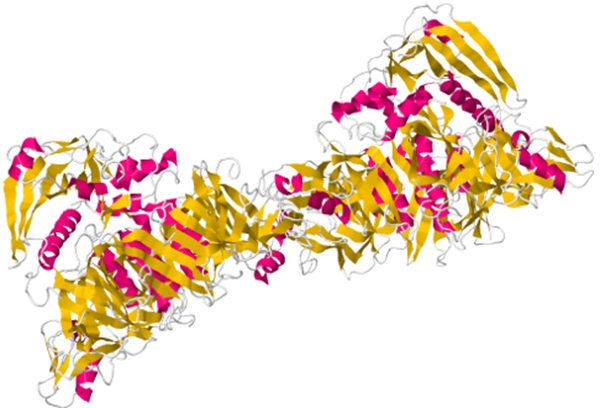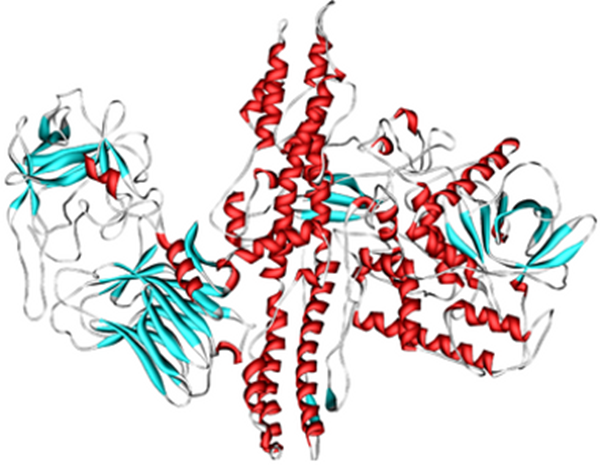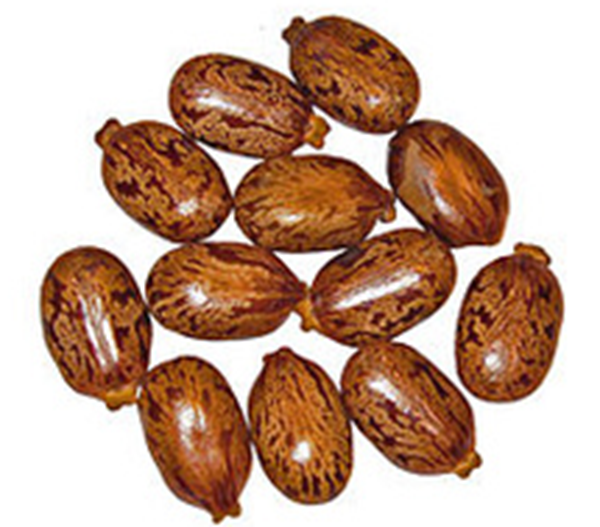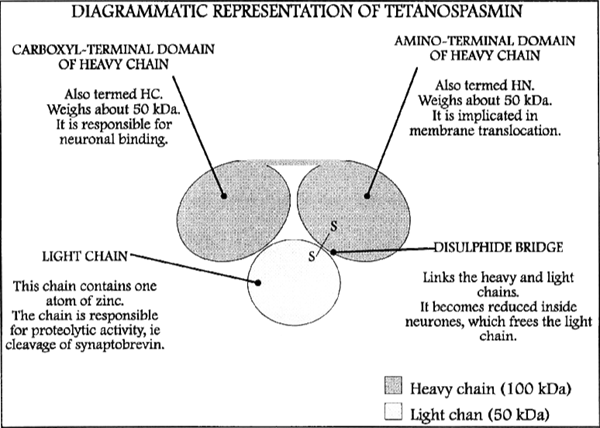
Proteins are the building blocks of life, and the reason we're all here on this planet. So it's weird to realize that proteins can be some of the deadliest poisons of all. We've already told you about the most dangerous chemicals - but some proteins that are found in nature can be the deadliest substances of all.
Here are 10 proteins that can kill you quickly and efficiently in nano-level qualities - and one of them is already inside you.
10. Ricin
Readily available from castor beans, ricin is an extremely potent toxin. Ricin prevents the synthesis of proteins by disrupting the ribosome, effectively inhibiting the activities of the human body on a cellular level.
Chewing a handful of castor beans can lead to death, and one of the scariest terrorist threats is inhalation of ricin in a purified powder form. If you inhale powdered ricin, respiratory and digestive problems occur within six to eight hours, and death follows in 36 to 72 hours.
9. Cholera Toxin
Cholera toxin is interesting from a structural standpoint. The active form of the protein is created from two different subunits that must be assembled correctly in order to create the working toxin. The two subunits have different functions, and when working together, they cause a flood of negatively charged chloride ions, a flood quickly followed by an increase in the presence of positively charged sodium and potassium ions as well as water in the intestine.
Intestinal chaos quickly ensues, with infected individuals becoming dehydrated as the body sheds several litres of fluid in the form of watery diarrhoea in hopes of restoring order.
8. Major Prion Protein
Remember "Mad Cow Disease," aka bovine spongiform encephalopathy? This is the protein that causes it. Major prion protein (also known as PrP) is already found throughout the human body, particularly within the nervous system. A slight change in the three-dimensional structure of the protein leads to a variety of debilitating and deadly diseases.
7. Pertussis Toxin
 Image source: Jmol/CC
Image source: Jmol/CC
Another multi-subunit protein, pertussis toxin shuts down communication between cells inside your body.
Pertussis toxin is released by the bacteria Bordetella pertussis, with the protein interfering with the body's immune system. This combination of a compromised immune system and intercellular communication problems aids Bordetella pertussis in causing cases of whooping cough.
6. Ectatomin
The primary toxic component of venom from Ectatomma tuberculatum ants, ectamonin manoeuvres into the plasma membrane of cells. Once settled within the plasma membrane, this relatively small protein (a little less than 8 kDa) creates pores within the membrane. These new pores allow for passage of cations across the membrane and a rapid change in electrical gradient, killing the cell.
5. Conopeptides
A series of short molecules made up from the same amino acid building blocks as proteins, conopeptides originate from poisonous marine cone snails. The snails deliver the peptides through their tooth-like, disposable radula (which you can see on the left).
Conopeptides are a hot topic in pharmacology, with researchers attempting to derive neurological and cardiac drugs using the basic structure of these poisons.
4. Abrin
The lesser known cousin of ricin, abrin is a protein found in seeds of the rosary pea. The CDC labels abrin as a potential agent for chemical terrorism, because it's significantly more potent than ricin and there's no antidote. Vomiting, bloody diarrhoea, and hallucinations follow the ingestion of abrin - with death often occurring in three days due to complications from spleen, kidney, and liver failure.
3. Verotoxin
 Image source: Matt Jensen/CC
Image source: Matt Jensen/CC
I'm a big fan of this one just because of the name. Verotoxin is often found in cattle faeces, making for an easy way to spread the dangerous protein to humans.
This toxin interferes with the creation of proteins within small blood vessels in the kidneys and gastrointestinal tract. Eventually, the damage to the blood vessels will result in decreased organ efficiency or complete organ failure.
2. Tetanospasmin
This neurotoxin eventually causes muscle spasms, the tell-tale symptom of tetanus. The protein travels through the body with the aim of finding the nervous system. Once in the nervous system, tetanospasmin irreversibly binds to neurons.
While bound, tetanospasmin blocks the release of neurotransmitters by degrading the protein synaptobrevin. This increases muscle sensitivity, leading to the spasms associated with tetanus. Contact with tetanospasmin is extremely deadly, with as little as 200 nanograms capable of causing death in a human. To put this in perspective, an ant weighs about 1500 times the lethal dose of tetanospasmin.
1. Botulinum Toxin
 Image source: Protein Data Bank/CC
Image source: Protein Data Bank/CC
First discovered in improperly handled meat products, botulinum toxin is the most toxic substance known to humankind. As little as 100 nanograms of pure botulinum toxin can kill the average human. The onset of symptoms varies from six hours to ten days, with the toxin leading to paralysis of muscles involved in breathing and death.
Botulinum toxin also the protein behind the commercial product Botox, the cosmetic product that paralyzes facial muscles in order to eliminate wrinkles.
Top image source: Shutterstock.com






No comments:
Post a Comment
Please adhere to proper blog etiquette when posting your comments. This blog owner will exercise his absolution discretion in allowing or rejecting any comments that are deemed seditious, defamatory, libelous, racist, vulgar, insulting, and other remarks that exhibit similar characteristics. If you insist on using anonymous comments, please write your name or other IDs at the end of your message.